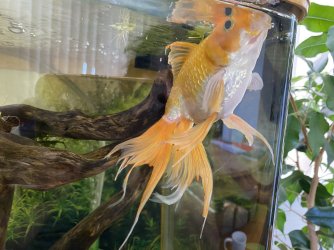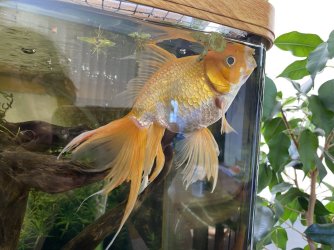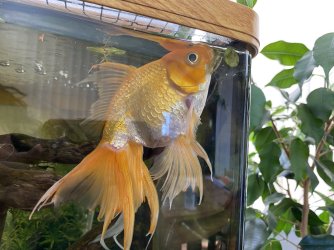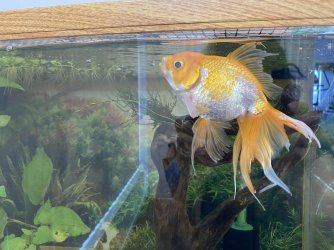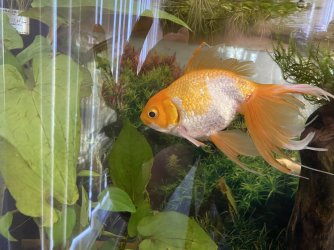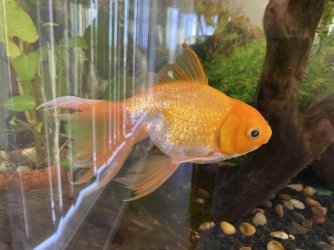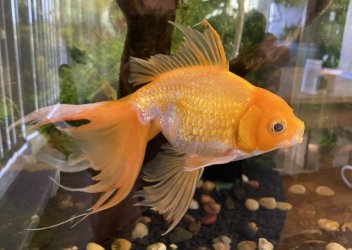Hi, I joined this group as I started a 150L planted tropical tank in November and I found so much useful information here. I’m letting it do it’s thing and will get a couple of Otos to start with eventually.
The problem I need help with is actually a cold water goldfish. I’m trying to work out what’s wrong with him, if it’s finrot or something else.
He was given to us by a friend of a friend as we have outdoor goldfish in a couple of ponds. Didn’t think he would survive out there though so we put him in an unused 90L tank we had. (He was in a 20L tank and had been in there for 9 years).
He used to just sit at the bottom of the tank but now he swims around all day, so he seems much happier but his fins and tail are really raggedy. On one of the photos, there’s an arrow pointing to the little back tail fin on the left that’s completely gone, it’s just a stump. And also a black spot.
I’ve been doing weekly, or every 4 or 5 days, 30 to 40% water change but from today I’ll do 25% daily. I use seachem stability each time and the water’s from barrels that feed the ponds.
Can you tell from the photos, what’s wrong and how can I treat it? He eats well and seems fine otherwise but I’m worried he’ll lose more of his fins and tail.




The problem I need help with is actually a cold water goldfish. I’m trying to work out what’s wrong with him, if it’s finrot or something else.
He was given to us by a friend of a friend as we have outdoor goldfish in a couple of ponds. Didn’t think he would survive out there though so we put him in an unused 90L tank we had. (He was in a 20L tank and had been in there for 9 years).
He used to just sit at the bottom of the tank but now he swims around all day, so he seems much happier but his fins and tail are really raggedy. On one of the photos, there’s an arrow pointing to the little back tail fin on the left that’s completely gone, it’s just a stump. And also a black spot.
I’ve been doing weekly, or every 4 or 5 days, 30 to 40% water change but from today I’ll do 25% daily. I use seachem stability each time and the water’s from barrels that feed the ponds.
Can you tell from the photos, what’s wrong and how can I treat it? He eats well and seems fine otherwise but I’m worried he’ll lose more of his fins and tail.


